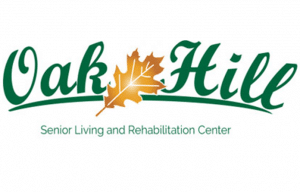Vaccine inequity examined

Monroe County residents who want to get vaccinated to protect themselves from the novel coronavirus should not expect to get the shot here in the near future.
That is because the state, after allotting Monroe County a record 1,000 doses last week, dropped the county’s allotment to 200 doses this week.
New projections on vaccine allotment from the state show that level will remain in place for now, per Monroe County Health Department Administrator John Wagner.
“We are anticipating getting 200 doses a week for the next three weeks,” Wagner said. “That means we will have no doses available to the general public. We’re only going to have some for our teachers and the few first responders and medical people who are running around (unvaccinated) out there.”
Wagner said the decreased allotment is on par with what Randolph County is slated to receive, as it will also get 200 doses, and St. Clair County’s allotment, as it will get 1,600 doses.
But St. Clair County’s mass vaccination clinic last week received 10,000 doses, which takes it several days to use, according to Wagner. For Wagner, this is the latest symptom of a problem plaguing vaccine distribution in Illinois.
“Fair and equitable distribution of the vaccine is not happening, and the state is not being transparent about how they’re distributing the vaccine,” Wagner said.
The state added two vaccination sites in Monroe County last week, as Walgreens locations in Waterloo and Columbia now offer the vaccine. An appointment is required to get the shot by clicking here.
The Republic-Times examined data provided by the state about how the COVID-19 vaccine is being administered statewide.
The findings of that analysis are troubling on their face, and the Illinois Department of Public Health did not respond to multiple requests for answers to specific questions regarding the distribution.
Wagner said that has been the case when he has questioned the state as well.
“I’m not saying it’s politics, but when I call the state and they don’t give me an answer, I have to go on the assumption of what it looks like. And that’s what it looks like,” he said.
The Republic-Times used three metrics to measure vaccine distribution on a county-by-county basis.
We used percent of the population fully vaccinated, which the state provides. We also calculated the percentage of each county’s population that has gotten at least one of the two shots required and the percent of the population that has received at least one shot, which is the sum of the people who have gotten one shot and those who have gotten both.
With those calculations complete, the paper then found the counties that ranked in the bottom 10 and top 10 in each of those categories using data from Feb. 10 and Feb. 15.
The result was that counties south of Springfield more often ranked in the bottom 10 of each category, while counties north of Springfield more often ranked in the top 10 in each metric.
The severity of the discrepancy varied.
For example, on Feb. 10, there were five counties south of Springfield and five north of the capital that were in the top 10 of all 102 counties in the state by percentage of the population with at least one shot.
Conversely, there were eight southern counties and two northern counties in the bottom 10 ranked by the population who were fully vaccinated.
The percentages can also make the disparities more striking.
For example, on Monday, Adams County ranked highest in the state in percent of residents who got at least one shot at 34.19 percent. Alexander County, which ranked last in that metric as of Monday, had only 3.56 percent of its residents with at least one dose of the vaccine.
Wagner was unsurprised by those statistics.
“That’s what I’m seeing and hearing from health departments on numbers, and no health department is sitting on vaccine,” he said.
As of Monday, 11.22 percent of Monroe County residents had gotten one shot, 2.29 percent had received both and 13.52 percent had gotten at least one shot. That was good for 56th, 87th and 72nd in the state, respectively.
Wagner further pointed to the state’s first 10 vaccination sites run with the help of the National Guard as evidence of inequality.
“Every one of them was in a strong Democratic County,” he said before admitting that more populous areas are usually more liberal. “But still, all 10?”
According to the IDPH’s website, vaccine distribution is based on population and weighted using a metric called the COVID-19 Community Vulnerability Index.
The CCVI is a variation on a metric used by the Centers for Disease Control and Prevention to help make decisions when responding to an emergency. The goal in using the metric is to provide equity by ensuring the communities hardest hit by the pandemic get adequate vaccine allotment, per the IDPH.
The CCVI measures myriad factors like number of people below the poverty rate, single parents, pre-existing conditions and health care access.
That does not mean this is the reason some counties are getting proportionally fewer doses of the vaccine, as the IDPH did not confirm this.
The Republic-Times also examined data regarding the counties in Region 4.
On Monday, Monroe, St. Clair, Randolph, Madison, Clinton, Bond and Washington counties ranked across the board on each of the three metrics analyzed.
Clinton County ranked in the top 20 of each category, while Randolph ranked in the 30s for each metric. St. Clair County was between 66th and 93rd, Bond County was between 37th and 75th and Washington County was between 32nd and 61st.
The outlier was Madison County, which ranked 82nd by percent of population with one shot, 90th by percent of population fully vaccinated and 85th by percent of population with at least one shot.
Those numbers were the lowest or, in the case of the fully vaccinated metric, the second-lowest in the region.
Wagner said those statistics lend further credence to his concerns.
“Why is Madison County lower than St. Clair County,” he asked, noting Madison County now has a larger estimated population. “Could it be that the politics in Madison County shifted to Republican a few years ago, and they’re strong Republican now? Tell me another answer.”
None of the information here conclusively shows Illinois is not distributing the vaccine in a fair manner, but much of it appears that way, and it is difficult to see the state’s argument without explanations from the IDPH.
Wagner, who is convinced distribution is not equitable, advised individuals to contact their local state leaders or “anyone else they can think of” to press this issue.
He also thanked Rep. David Friess (R-Red Bud) and Sen. Terri Bryant (R-Murphysboro) for their help already.
“People in Monroe County need to be furious about this,” Wagner said.






